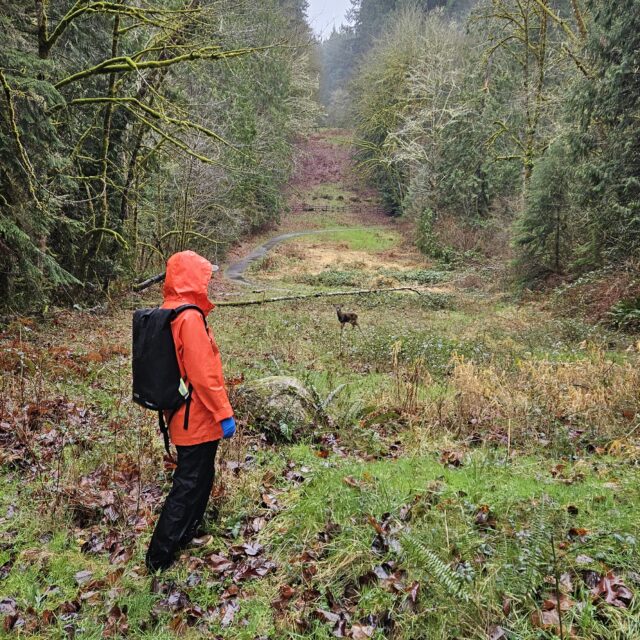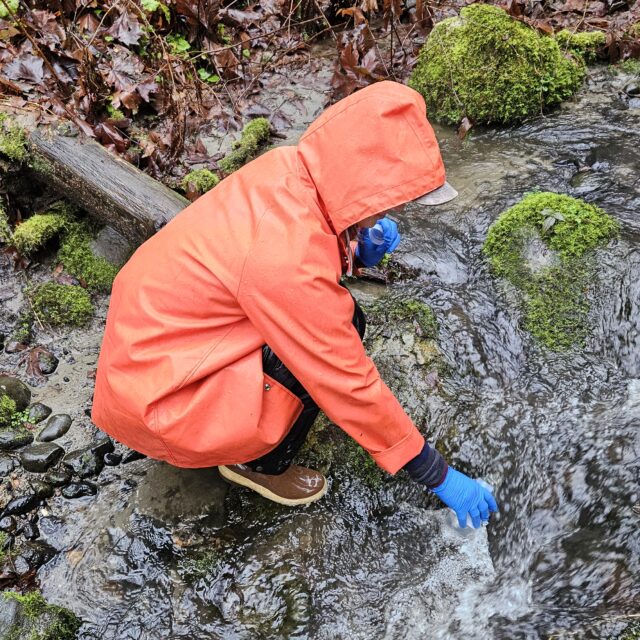Shawree Zhang, a scientist at Herrera, recounts a day of stormwater testing in the Seattle area.
Overview:
Date and Location: 11:30 am January 8, 2024, Redmond Paired Watershed.
Weather Conditions: Cold with intermittent heavy rain. Streams were turbulent due to continuous rainfall in the preceding week.
Shawree and the team of four arrived at the Redmond Paired Watershed at 11:30 AM. Shawree paired with field tech, Meaghan O'Connor Lenth, to visit the predetermined sites to collect water grab samples. The location is part of a study to quantify water quality improvements resulting from the City’s implemented stormwater controls and gather wetland data. Samples were collected in glass and plastic containers. Water quality data is gathered with a YSI ProDDS water quality meter. Lastly, the water level is checked with a gauge.
After the samples and data are collected, a team member delivers the samples to the lab for analysis. Shawree shares why stormwater testing is important, “Stormwater testing provides valuable information about the effects of human activity on our waterbodies, and then we can develop ways to mitigate those effects. 6PPD-q research specifically is very important because of its impact on salmon, and stormwater sampling is providing data that will advance our understanding of it.”

As this work is important, it can be demanding for those in the field. Sometimes, samples need to be collected early in the morning or later in the evening. On previous occasions, Shawree has collected samples as early as 6 am and as late as 8 pm to catch a storm. Another common challenge is planning. Testing must be done during storms to capture the rush of new sediment and pollutants that are washed into our waterways. Since timing is essential, storms must be tracked accurately, equipment needs to be prepared, and the team needs to be available to go into the field, especially if the storm shifts and plans are changed.
Many of these sites are accessible via long walks on wooded trails. To stay safe, the team uses handheld flashlights or headlamps when it’s dark. To steer clear of falling branches, Shawree and her team avoid sites under dense tree cover on windy days.
Shawree and the other stormwater testers face unique challenges in their line of work. Their dedication and adaptability in unpredictable conditions help researchers understand human impact, leading to healthier waterways and habitats.
Contributor: Shawree Zhang
